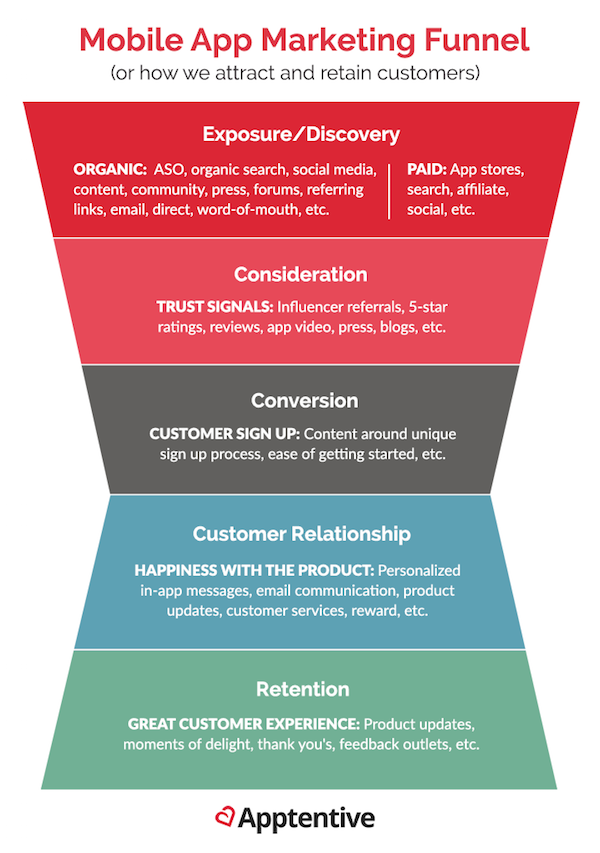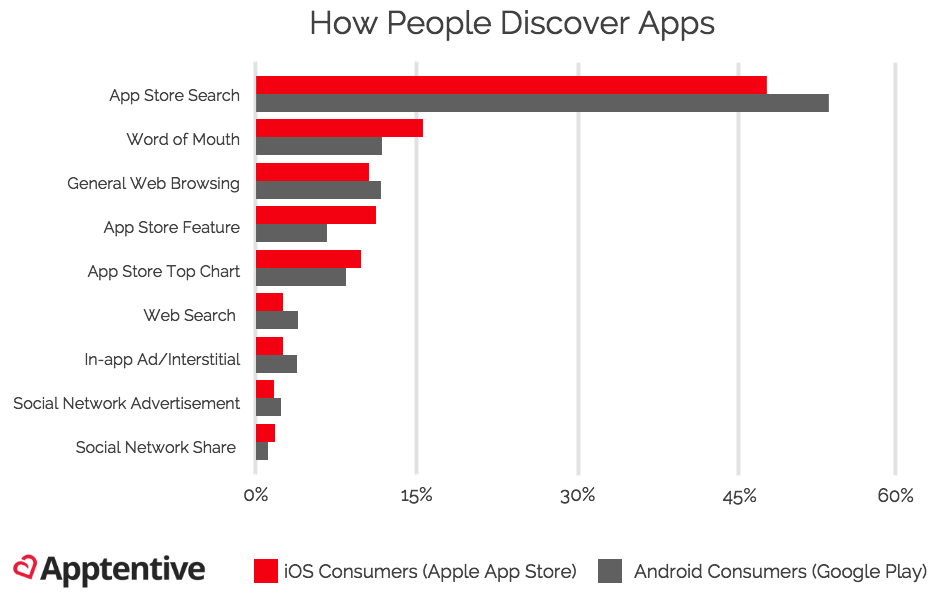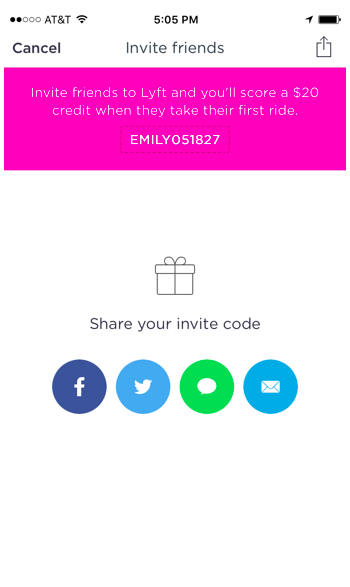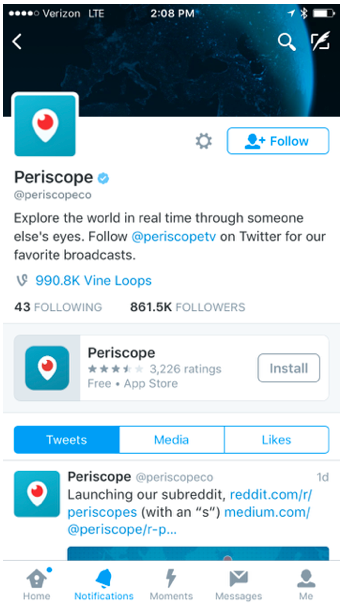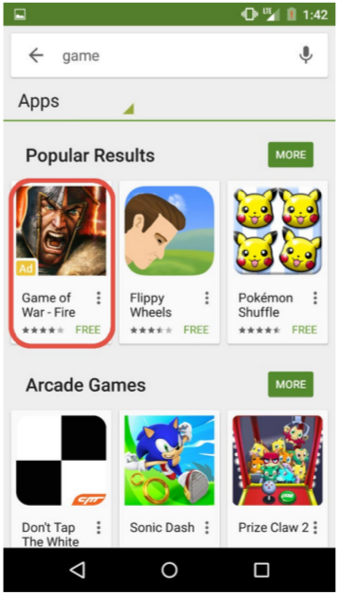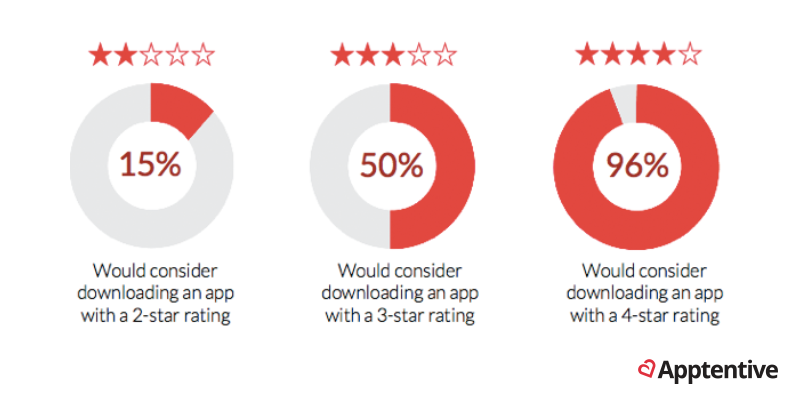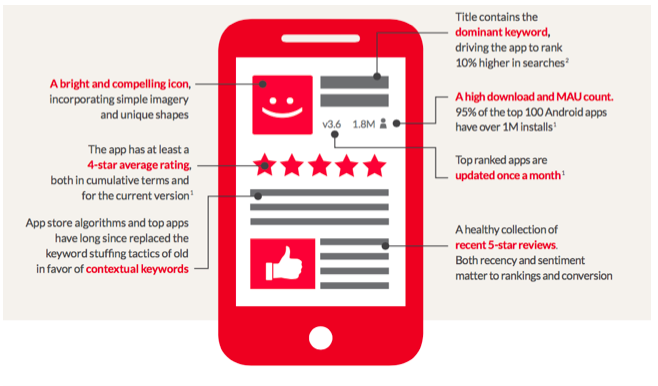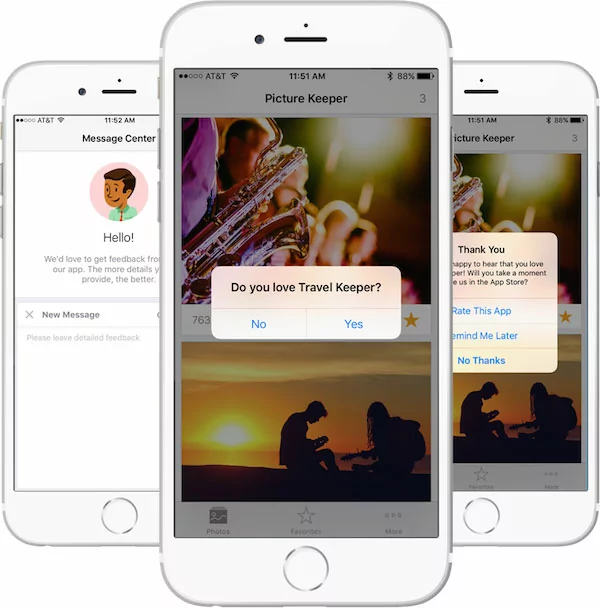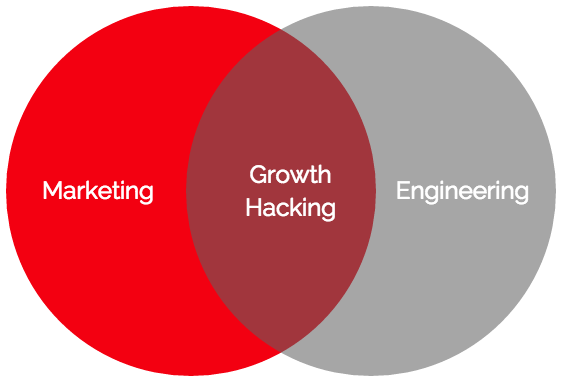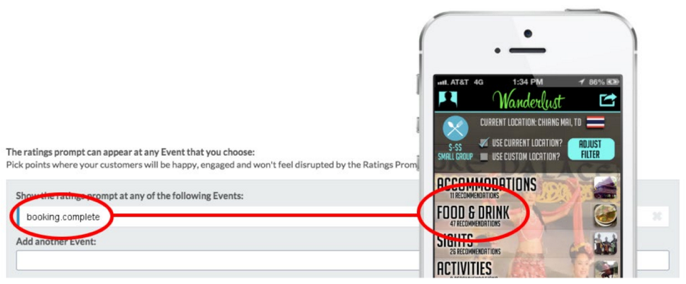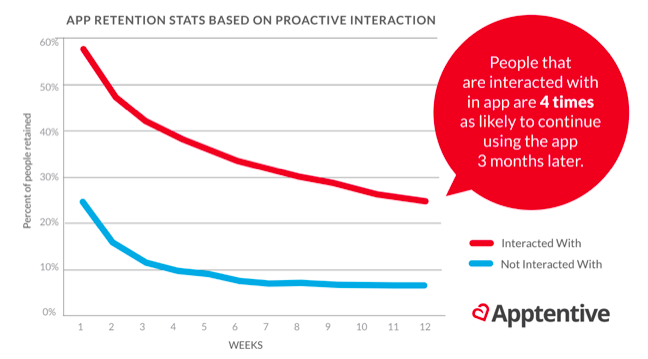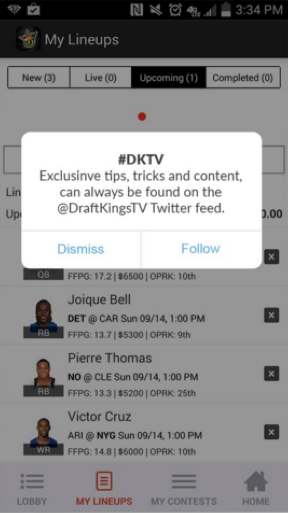Marketers are familiar with the traditional marketing funnel and the tactics that align with each stage. But mobile app marketing requires investing in different tactics, and there are quite a few changes to the funnel when it comes to marketing apps.
Today’s consumers engage with apps much differently than they engage with a desktop experience, which means marketers must adjust what they know about their funnels to match a new in-app customer journey. In today’s post, we take a look at the mobile app marketing funnel, how it differs from the traditional marketing funnel, and share best practices around tactics marketers can use at each stage. Let’s begin!
The mobile app marketing funnel
The mobile app marketing funnel is laid out in a similar way to a traditional marketing funnel. Potential customers discover the app through a variety of tactics, then move through the consideration and conversion stages, eventually move into the customer relationship and retention stages.
Although the layout may look similar to funnels you’ve become familiar with over the years, there is one big difference in the mobile app marketing funnel: The tactics used to move customers through the funnel vary vastly from tactics used in traditional desktop marketing. Apps offer a unique opportunity for marketers to connect with their customers, and the marketing funnel must shift to include these new channels in order for marketers to capitalize on the opportunity.
Through working with thousands of apps across different stages of the mobile funnel, we’ve learned a thing or two around how to approach mobile app marketing over the years. Below is a high-level view around what we’ve learned about the different stages of the mobile app marketing funnel, along with tactics marketers can use across each stage.
Stage 1: Exposure and Discovery
Compared to a traditional marketing funnel, the biggest difference we see in the mobile app marketing funnel is the early stages (in this case, Exposure and Discovery) are combined. For mobile apps, the “purchase decision” time is the time it takes to decide to download an app. In contrast to a long enterprise sales time, the decision time to download an app can be relatively short.
In the Exposure and Discovery stage, the marketer’s job is to help drive awareness and app discoverability. In other words, how do you ensure customers can find your app amid a sea of more than 1.5 million apps?
According to Alchemer Mobile (formerly Apptentive)’s data, here are the top ways potential customers discover apps:
Tactics for the Exposure and Discovery stage can be broken up into organic and paid strategies.
Organic tactics
Many organic tactics are similar to traditional marketing funnel: invest in press, social media promotions, referral links on partner blogs, email marketing, etc. to expose the app to potential customers and drive organic traffic.
However, for the sake of this post, we’ll focus on mobile app specific organic tactics:
App Store Optimization (ASO): The process of optimizing mobile apps to rank higher in an app store’s search results (i.e. the app version of SEO). ASO drives 48% of all new app discoveries. To set your app up for success with ASO, make sure you have a bright and compelling icon, use contextual keywords, include a dominant keyword in the app name, make frequent updates, and have a healthy dose of recent 5-star ratings.
Word of Mouth (WOM): The key to WOM is making your app easy to share. WOM marketing is one of the oldest forms of marketing, and still makes a huge difference in today’s consumer landscape. To help encourage WOM marketing, you can create reward programs that incentivize referrals. Take the Lyft app, for example. The app makes the service easy and fun for customers to share with their friends and family members, which in turn will help drive WOM marketing and ultimately, referrals.
Social media: In addition to creating a community of fans through social media, you can promote your app right from your social page. Twitter introduced App Cards that allow people to download an app directly from a Twitter page. Here is an example of the Periscope app leveraging Twitter App Cards:
Internet forums, Q&A sites, and social bookmarking: No matter your business, there’s bound to be a community out there full of potential customers. Find these communities and engage with people on the channels they already frequent. One important point to note: Communities typically have their own unique guidelines and etiquette practices in place. For best results, be sure to learn what is is socially acceptable on each individual community before joining in the conversation.
Paid tactics
While on the surface many tactics for paid customer acquisition are the same as traditional marketing, the execution is a bit different. Let’s look at a few tactics in-depth:
Affiliate marketing: Affiliate marketing is similar to online referral marketing. App marketers join an ad network to create featured widgets and code snippets other app or web publishers embed on their platforms, and the app marketer pays affiliates a small fee for each download. A free version of affiliate marketing works if you have multiple apps, but if your audiences are similar, you can use an Alchemer Mobile (formerly Apptentive) Note (shameless plug) to cross promote them.
App install ads: There are lots of different paid avenues to drive app installs. The main social networks (Facebook, Twitter, AdWords, YouTube, Tumblr, etc.) each offer their own version of app install ads. You can also sponsor ads in the Google Play store. These ads are a great way to drive downloads and reach a targeted audience. For example, check out the search result for “game” in the Google Play store. You’ll see a subtle difference between the paid advertisement and organic search results, but the end experience stays the same for the consumer.
Retargeting ads: If you have a built in referral system in your app, retarget your customers’ referrals with ads until they convert and become a customer. For more on retargeting through your app, check out Fiksu’s guide Retargeting: Why Your Mobile Marketing Strategy is Incomplete Without It.
Stage 2: Consideration
The Consideration stage is all about demonstrating trust signals. For apps, much of the Consideration stage is done via app ratings, reviews, and social proof on the actual app page in the app stores.
If you’re leveraging paid customer acquisition, app ratings are critical, especially since many app install ads display ratings. In a recent survey, Alchemer Mobile (formerly Apptentive) found 85% of people won’t download a 2-star app. Yikes! In contrast, a 4 or 5-star rating builds positive trust signals, drives more organic downloads, and makes your acquisition dollars go farther.
Tactics
We recommend building trust signals to help with consideration across all your app marketing channels—your website, social presence, email communication, etc. However, the channels you should be most focused on include:
App page: Include trust signals such as press reviews or quotes from your raving fans on your app page in the app stores. The app stores also allow you to include a promotional video which can help people see the experience your app offers before they download.
Further tips for a well-optimized app page include:
App ratings and reviews: I want to reiterate the important of app ratings and reviews. Getting your ratings up to 4+ stars makes your marketing dollars go further, not to mention your brand saves face. Tools such as Alchemer Mobile (formerly Apptentive)’s Intelligent Ratings Prompts can help make boosting your ratings and reviews simple by allowing you to guide happy customers to the app stores to leave their feedback, and connecting unhappy customers with a member of your team to help solve their pain.
Stage 3: Conversion
Depending on the type of app you have, the definition of conversion varies. Conversion can be the act of downloading your app, signing up for an in-app subscription, making an in-app purchase, setting up an account, or many other points. Regardless of your definition of conversion, there are tactics you can use to drive more people forward:
Tactics
We recommend taking a look at your current conversion metrics to identify spots of strength and weakness before putting a plan of new tactics together. Once you have a baseline, we recommend starting with the following:
Onboarding: The key for increasing conversion is to make it easy for people to get started with your app. Spend time optimizing your initial download to app usage flow so people can use your app in a meaningful way as quickly as possible. The more simplified you make your onboarding process, the better the initial experience will be for new customers.
Usability and visual design: An Appiterate survey found 42% of people would uninstall an app because of a bad user interface, and 68% because of a poorly designed registration process. Wow! This goes to show the very first impression a potential customer has of an app sticks with them. It is critical we as marketers work with our developers and user interface designers to make sure our customers have a positive interaction with our app. As the image below suggests, when marketing and engineering mesh, it opens the door for growth hacking, which can help speed your way to conversion success.
Stage 4: Customer Relationship
The key to developing customer relationships is providing value. Many app developers spend a significant amount of time acquiring new customers and forget to build customer relationships with the customers they already have. Just like physical retailers build relationships with their customers in store, it is imperative to do the same within an app. The key to building customer relationships is to identify the appropriate mobile moments to proactively communicate with your customers.
For example, when you shop for a pair of shoes at Nordstrom, the sales associates typically won’t approach you until you have a shoe in your hand. They don’t bombard you the moment you walk in the store. Rather, they look for cues and then are ready to help you try on shoes and complete your purchase in a comfortable, positive way.
Tactics
Think about how this approach to building customer relationships can translate to your mobile app experience by following these tactics:
Find the right mobile moment: Don’t bother your customers. Rather, reach out to them in-app when you can alleviate frustration, or after they’ve had a positive experience. Ask customers for feedback, and be sure to respond once they share their thoughts. Customer service, reward fulfillment, communication, and happiness with the product, all lead to positive customer relationships.
Personalized messaging: Like one-to-one marketing, personalized messaging is the manifestation of how we incorporate everything we know about our customers’ loves, likes, and dislikes into their mobile app experience. The more you personalize your messages using customer data, the better the overall experience will be.
In-app communication: Mobile is a vehicle to listen to customers. Customers expect to be able to communicate with you from within the app, and it’s imperative to give them an outlet to provide feedback so that they don’t turn to the app stores or social media. Make your brand accessible by providing access to an in-app feedback button or Message Center to build strong relationships by listening and responding to customers.
Stage 5: Retention
Retention is critical, particularly since it’s five times more expensive to replace a customer than to retain one. Our research has shown apps that proactively engage with their customers are four times more likely to still be customers three months after install.
If you build relationships with your customers, offer them great experiences, and respond to their feedback, they are much more likely to stay engaged. In a recent consumer study, we found that 98% of app users are likely to leave feedback when a company asks for it directly. And, when a company responds to customer feedback, that customer is very likely to be loyal to that company (or app). Not only will you gain valuable feedback to make your app better, you’ll also make your customers feel a part of the process and in turn, they will be more loyal to your company and your app.
Tactics:
Retention tactics help provide value to encourage mobile customers to stay. Frequent app updates, moments of delight, thank you’s, and feedback outlets keep your customers coming back to your app.
Fresh content: It is crucial to update in-app content regularly to keep customers engaged and coming back to your app frequently. This could be adding a new level to your game, adding your spring catalogue content to the app, or adding new and improved features. Offer customers something new and original every time they open your app. Fresh content affects every stage in your funnel, but particularly retention.
Push notifications: Push notifications are messages or alerts that appear on a customer’s device even when they are not actively using your app. When done right, they can encourage users to open and use your app. Check out a recent blog post we wrote on how to leverage push in a helpful, customer-friendly way in order to help drive retention.
Loyalty programs: Loyalty programs are a great way to convert casual customers into highly active and highly profitable evangelists. For example, the My Starbucks Rewards loyalty program helps encourage engagement and build brand love and loyalty through their mobile app. The app encourages customers to pay with their mobile devices and rewards them on their birthday or when they’ve hit certain thresholds within the app experience.
In conclusion
The mobile app marketing funnel is different from the traditional marketing funnel, but the skills needed to approach both approaches are similar. In order to put together an effective plan for both app and desktop experiences, it’s important for marketers to understand the differences between both funnels to see where they overlap and separate.
I hope you enjoyed the tactics above and are able to take them back to your current strategy to implement immediately. What other tactics do you use to help people discover your app and continue to use your app in a meaningful way? I’d love to hear your thoughts in the comments below.

